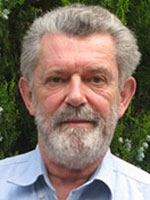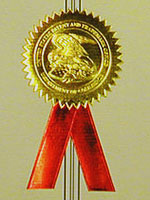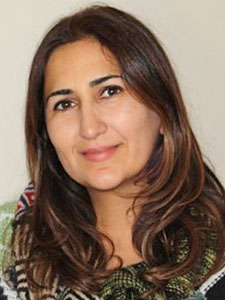Recent News
CHTM Joins NSF's NQVL Pilot Projects
August 9, 2024
OSE PHD, Dr. Xuefeng Li - Wins The Outstanding Interdisciplinary Graduate Programs Award
May 10, 2024
Dr. Ali Rastegari - 2024 OSE Best Dissertation Award Winner
May 10, 2024
2024 OSE Spring and Summer Graduates
May 10, 2024
News Archives
U.S. Patent issued to Diels et al. for "Intracavity fiber sensors"
August 15, 2017 - CHTM

Jean-Claude Diels
U.S. Patent No. 9,726,472, “Intracavity fiber sensors," was issued to Diels et al. by the U.S. Patent & Trademark Office (USPTO) on August 8, 2017. Jean-Claude Diels is a Professor of the Departments of Physics and Astronomy (P&A) and Electrical and Computer Engineering (ECE) at The University of New Mexico's (UNM). He has taught at UNM and been a faculty member of the Center for High Technology Materials (CHTM) since 1987.
Ladan Arissian is also named on the patent. Arissian is an Assistant Professor with UNM ECE and a CHTM faculty member.
Diels and Arissian are co-authors of many research papers and the textbook "Lasers: The Power and Precision of Light," named a CHOICE Outstanding Academic Title in the Engineering category in 2012.
Abstract
Apparatus, systems, and methods of operating a fiber laser having polarization-preserving fibers can be applied as a sensor to detect a physical quantity. In various embodiments, polarization-preserving fibers can provide a laser cavity having an interferometer disposed in the laser cavity. In various embodiments, a fiber optical parametric oscillator can include an interferometer disposed in the cavity of the optical parametric oscillator. Additional apparatus, systems, and methods are disclosed.

Background
Interferometry has been a tool for precision measurement long before the invention of lasers. It involves comparing two paths (sample and reference) of single frequency or multi-color light. The result of the phase measurement, as in the Michelson interferometer, is observed as an amplitude modulation of interfering beams. The use of resonator based laser sensors results in a substantial sensitivity improvement, based on their quality factor ("Q"). A physical quantity (e.g., a stress in a fiber or in a waveguide, change in molecular state in a high quality Fabry-Perot, etc) that changes the phase of a resonator, is monitored with a change of its transmission. The sensitivity to the phase change is Q-times higher than the conventional interferometer due to the sharp resonance feature in a resonator, which implies repeated passage through the phase perturbation.
A fiber laser has features that make it very promising for intracavity phase interferometry (IPI) implementation for optical measurement. Its obvious potential advantages over the free space competitors are compactness and good wall-plug efficiency. In addition, Fresnel drag cannot interfere with the measurement if there is no free path in air. There have been preliminary demonstrations that suggest that this approach is practical. Bidirectional ring laser with a beat note response was demonstrated. A fixed carbon nanotube saturable absorber has been implemented to ensured mode-locking and fixed crossing point. A relatively large dead band limits the applicability of this configuration. Improvement of various designs can enhance the accuracy and precision of measurement by IPI.
Source
Jean-Claude Diels has taught at UNM and been a CHTM faculty member since 1987. He has an M.S. and a Ph.D. in Physics Engineering from the University of Brussels, Belgium. Diels has advised over 57 Ph.D. and 17 Masters students at UNM. In July 2016, Diels made a presentation in Barcelona, Spain for the OSA Foundation’s Siegman International School on Lasers. Diels was named the 51st Annual Research Lecturer at UNM in April 2006, and received the 2006 Engineering Excellence Award of the Optical Society of America (OSA) for the invention of the IPI. He is a Senior Member of the IEEE and Fellow of the Optical Society of America.
He is the Principal Investigator of the Diels Research Group. Fifteen issued U.S. patents are a testimony to the strength and diversity of the Diels Group’s research. The group engages in collaborations with other organizations around the world in experimental investigation of:
- Ultrafast phenomena
- Development of femtosecond laser sources
- Optical imaging using femtosecond range gating
- Nonlinear optics
- Coherent interactions between light and matter
- Picosecond and subpicosecond technology
- Multiphoton excitation of molecules and atoms
- Laser gyroscopes
- Study of nonlinear interfaces
- Multiple Quantum Wells
- Laser induced discharges
- Propagation of intense pulses in air
- Adaptive Optics

Ladan Arissian
In addition to the ECE, Arissian is a Research Assistant Professor in the Optical Science and Engineering program at UNM, where her research interests include:
- Ultrafast Phenomena
- Attosecond Science
- Laser Sensors
- Laser Filaments
Arissian was previously a Research Associate at the Physics Department of Texas A&M University, performing research in attosecond science at the National Research Council of Canada. She has an M.S. in Nuclear Engineering (Medical Imaging), and an M.S. in Theoretical Condensed Matter Physics. She holds a Ph.D. in Optical Science & Engineering from UNM. She has been involved in teaching from high school level physics to graduate courses in Optics.
Arissian has published 40 articles and conference presentations, three book chapters and three patents in laser physics. She has authored or co-authored 124 research papers with 686 citations.
Arissian is also an Adjunct Professor in the Department of Physics at the University of Ottawa, where her fields of interest include:
- Frequency comb and metrology
- Laser based sensors
- Light filaments
- Remote sensing
- Plasma dynamics
- Parametric amplification
- Nonlinear optics


